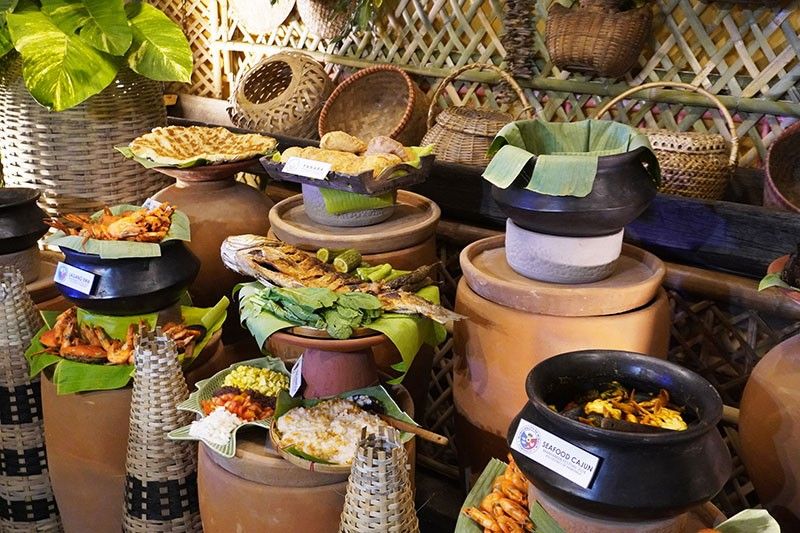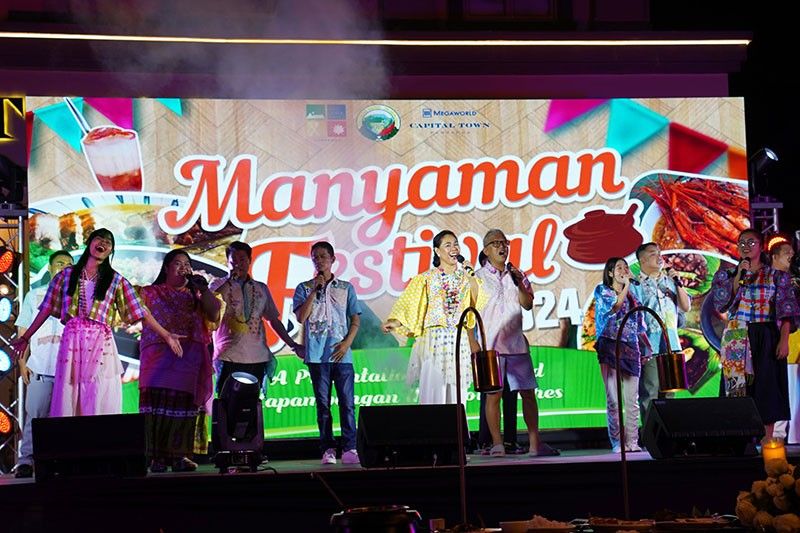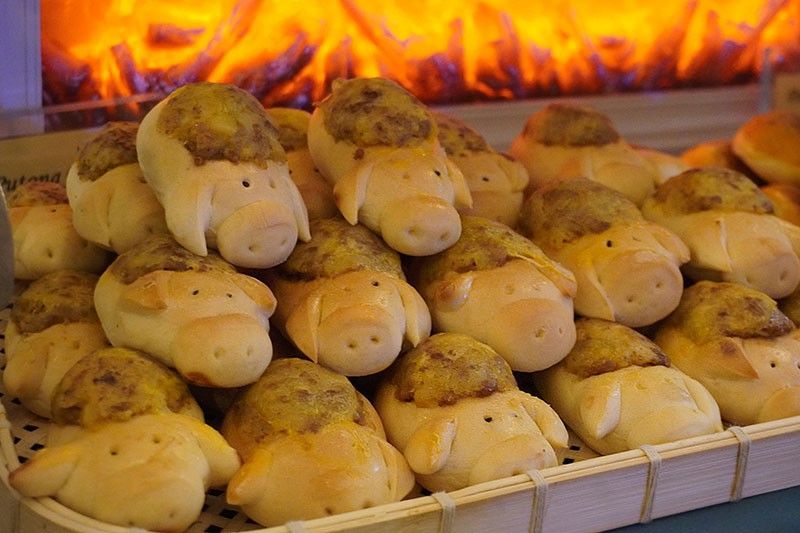‘Manyaman Festival’ celebrates Pampanga’s heirloom dishes and its people


Ginisang pugang panas, bringhe (Filipino-style paella), buro, pindang damulag (carabao tocino), sisig and putung babi (pork bread) are just some of the Kapampangan heirloom dishes that tickled guests’ curiosity and palates at the first “Manyaman Festival,” which was held recently at Capital Town in San Fernando, Pampanga, Megaworld’s first township in the north.
A native dish of the Aetas in Porac, Pampanga, ginisang pugang panas was one of the most interesting dishes served that night. Made from sauteed eggs of weaver ants harvested by the Aetas during summer, the dish tasted like camaro (stir-fried crickets), another exotic Kapampangan fare. It was salty, crunchy and packed with so much flavor.
Another dish that caught my eye was the piglet bread called putung babi. It tasted like toasted siopao but looked a tad cuter. The bread is cut in half, hollowed out a bit, then filled with tortang babi (sauteed ground pork with potatoes). It is then bathed in beaten egg and pan-fried to a golden-brown finish.

In an article written by STAR columnist Claude Tayag titled “Everything you want to know about ‘putung babi,”’ he mentioned that in its purest form, putung babi’s palaman (filling) doesn’t have a morsel of pork in it. So, where does the "babi" come in?
“There’s this theory that it came about because it is made with day-old pandesal, and at the end of each day, the unsold bread was normally fed to the pigs, hence stale bread fit only for pigs. Just leave it to the creative Pampango cooks to turn this day-old bread into a wonderfully delicious snack,” Tayag explained.

Indeed, Kapampangan dishes aren’t just about delicious flavors.
“They tell stories of our ancestors, their love for family and community, their ability to make the most out of what they had,” enthused Angelina Blanco, special assistant to the Governor, in her welcome speech. “Heirloom Kapampangan dishes such as those featured are not only mouthwatering, but also showcase our creativity and resourcefulness.”
And the first “Manyaman Festival” celebrated that story.
‘Hapag Pamana’
The province of Pampanga, in partnership with Megaworld’s Capital Town Pampanga, launched the Manyaman Festival on May 9. The recently passed culinary heritage ordinance of the Province of Pampanga, Provincial Ordinance 836, designates April each year for the celebration of the Manyaman Festival, aligning with National Heritage and Filipino Food Month.
The event gathered all local government units (LGUs, which were clustered into four legislative districts) under one roof to showcase the culinary offerings of the province.
Four tents (representing the four districts) were set up at the Capital Town and each featured a five-course meal — from appetizer to dessert — in a buffet setting. And no two dishes were the same.
Putung babi, along with paku (fern) salad, sabo bulanglang (vegetable soup), classic sisig (pig’s cheeks), pindang damulag (carabao tocino), bringhe and tibuk-tibuk for dessert, were served in District 1, representing Angeles City, Magalang, and Mabalacat City.
In District 2 (Sta. Rita, Floridablanca, Lubao, Porac, Guagua, and Sasmuan), we sampled chicharon with atsara papaya, bangus sisig, saleng manuk (tinola) with tanglad (lemongrass), asadong matua (pork stew) and pugang panas. The meal was capped by sanzrival, hopia, pituklip, ale ube, and masa podrida.?We were already full by the time we reached tent 3 (District 3, Bacolor, San Fernando, Sta. Ana, Mexico, San Nicolas and Arayat). But who could resist Pampanga’s tamales? Usually served for breakfast and merienda, this traditional Kapampangan delicacy is made of rice flour, coconut milk, and peanut butter. Topped with chicken and eggs and steamed to perfection, a tamale is a complete meal on its own.
The dish went well with tsokolateng batirul. We were told that Pampanga’s version doesn’t use tablea. Instead, they grind the dried cacao seeds and peanuts together to make this rich and nutty chocolate drink.
More food awaited guests over at District 4 (San Simon, Sto. Tomas, Minalin, Apalit, Masantol, Macabebe, Candaba, and San Luis). Known as the seafood district, we feasted on bulanglang bangus, seafood kare-kare, and buro (fermented fish), which went well with pritong tilapia.

“Centuries ago, Pampanga played a crucial role in trade due to our strategic location,” said Blanco over dinner. “We embrace spices from the Orient, cooking techniques from the Spaniards, and ingredients brought in by traders from all over.”
All these influences, combined with the ingenuity and resourcefulness of the Kapampangans, resulted in a truly special cuisine.
“We’ve gathered here today to celebrate not just the flavors of our past, but the legacy we leave for future generations — the vibrant and diverse Kapampangan food culture,” enthused chef Jam Melchor, founder of the Philippine Culinary Movement, a non-profit movement dedicated to the preservation of the Philippine culinary heritage and gastronomy. “But as we stand at the crossroads of progress and tradition, we are faced with a profound question: How do we ensure that the flavors of our past continue to thrive in the world of tomorrow?”
The answer, chef Melchor adds, lies in the power of preservation.
“The preservation of recipes, farming and cooking techniques, and ingredients that have sustained our communities for generations.”
And that, folks, is the reason why the province of Pampanga is mounting the first-ever “Manyaman Festival.” More than sharing the cuisine with the local and foreign visitors, the festival aims to pass the culture and tradition on.
“My being a Kapampangan has been my badge of honor every time I promote our food here and abroad,” enthused Melchor. “And even when I assumed (the post) as the executive chef of the United States Ambassador to the Philippines.”
The importance of preserving Kapampangan food culture is a task that falls to each and every Kapampangan — farmers, cooks, chefs, consumers, and advocates alike.
“Together, let us commit to preserving the flavors of our past so that they may continue to nourish and inspire us for generations to come,” adds Melchor.



















